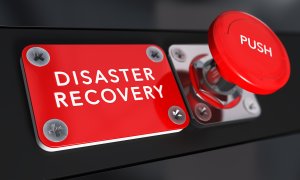
If it wasn’t enough witnessing the hurricane season that has just transpired in the U.S., the recent tornadoes in Ottawa and Gatineau serve as a reminder to us that while where we live is relatively safe, we too are susceptible to a disaster. Many of us pride ourselves in thinking we have some sort of plan in place, typically something cobbled together over time or in haste just to say we have something should the “worst” occur. Now is the time for a sober second look at what you have or don’t have in place and take the steps to have tools available for you to use. The idea is not to go overboard and start boarding up your windows or stockpiling supplies unnecessarily, but you do need to start thinking proactively about how you are preparing your business for a potential disaster. You should think in the context of your business being down for a few days or weeks and the implications that come with it. Here we discuss some of the basic elements that you will need to consider when you are developing your plan.
Communication, Communication and more Communication
When it comes to a disaster, a common thread that you hear the survivors always talking about is the need for some form of communication. Not knowing if fellow staff are ok and if the office is open or not only serve to compound an already stressful situation. A plan for communicating with your employees is essential because it puts all of them on the same page and clearly outlines the steps that the employees can take to get back to work as quickly and safely as possible. In a disaster, infrastructure is almost always damaged with phone and internet becoming unreliable to use. As part of your plan, documents should have all updated employee contact information and employees should understand exactly what their role is in the days following the disaster. Have a predefined method of communication should phone lines be down such as a communication through social media (i.e. Facebook) or have a predefined safe meeting place for staff (like a recreation centre or a Library). Another key part is letting your clients and your vendors know what your business status is. In this digital age, updating your website with alerts, updating your social media accounts and sending out mass emails to them with frequent updates is the most effective way to communicate.
 Assignment of Tasks
Assignment of Tasks
Tasks after the disaster like setting up workstations, assessing damage, redirecting phones and other tasks will need assignment. Also, consideration of who should contact the insurance company and liaise with the necessary authorities to begin the restoration process is critical. These tasks should be assigned to identified staff ahead of time (with a backup staff member should the original staff not be able to fulfill his/her duties) so you can quickly begin the process of resuming operations.
Plan for Your Equipment
Most current businesses have equipment in one form or another which will not fare well in a disaster. Worse, this equipment may all be centralized in one location. In day-to-day practice you can locate your equipment away from windows, doors and keep them off the floor. You can also look at more robust equipment that can withstand some weathering and survive, which may be necessary in your type of business should you have proprietary equipment components you may need to keep safe.
If you do have time to react before the disaster occurs, you can take steps like moving equipment off the floor, moving into a room with no windows, and wrapping securely in plastic so as to ensure that no water can get to the equipment. It’s obviously best to completely seal equipment to keep it safe from flooding, but sometimes in cases of extreme flooding this isn’t an option.
Data Continuity System
As you create your disaster recovery plan, you will want to explore exactly what your business requires in order to run. You should understand exactly what your business needs operationally, financially, with regard to supplies, personnel and with communications. It may be as simple as knowing your banking information (bank branch, account manager contact information) so you have access to funds to bridge your operations until you are back running at full capacity again, to knowing what work your staff was working on at the time of the disaster so you can quickly get available staff back out to service clients.
Reliable Backups
 How many of us think we have reliable data backups but have never checked? Test restores should be part of your regular maintenance plan and any issues should be resolved on an ongoing basis. These backups should include the most current working day which will be your point to restore from once you resume operation and should include the entire system. Of course, yes, it should be stored offsite geographically (preferable in the cloud spread across many servers across the country). There are many cloud backup solutions available today that can provide such a service in a secured manner so as not to compromise your data security as well.
How many of us think we have reliable data backups but have never checked? Test restores should be part of your regular maintenance plan and any issues should be resolved on an ongoing basis. These backups should include the most current working day which will be your point to restore from once you resume operation and should include the entire system. Of course, yes, it should be stored offsite geographically (preferable in the cloud spread across many servers across the country). There are many cloud backup solutions available today that can provide such a service in a secured manner so as not to compromise your data security as well.
Maintain a Detailed Asset Inventory
Yes, this one is forgotten a lot, but it is important to have a detailed inventory of workstations, their components, servers, printers, scanners, phones, tablets and other items that you and your employees use on a daily basis. This will give you a quick reference for insurance claims after a disaster by providing them with a simple list (with photos ideally) of any inventory you have. This can reduce delays in replacing the items and getting the business back up and running.
Pictures of the office layout
 In addition to the photos that you should have of individual inventory items, you’ll want to take photos of the office layout. This will be a valuable tool in showing your insurance company how your assets were used, where they were located and that they were real. It will also help in speeding up the recovery process since you now have a reference document on where to physically place the replacement equipment, furniture, etc.
In addition to the photos that you should have of individual inventory items, you’ll want to take photos of the office layout. This will be a valuable tool in showing your insurance company how your assets were used, where they were located and that they were real. It will also help in speeding up the recovery process since you now have a reference document on where to physically place the replacement equipment, furniture, etc.
These considerations are a great foundation for a complete disaster recovery plan, but make sure that you are paying attention to the details within each section of your plan. The internet can be a great place to start looking for a template of a plan that you can customize if you are a little overwhelmed in considering these details. You can also engage an external resource to help you put a disaster plan in place so that you are prepared for any disaster. In any case, the plan will only be as good as the effort and detail that you are willing to put into it. While it may be a tedious undertaking, always keep in mind that this may be one of the most important plans that you as a business owner will ever put together.
